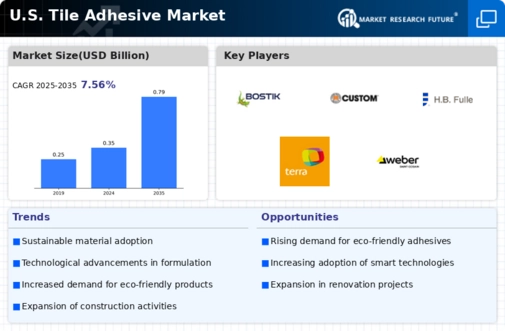Market Analysis
In-depth Analysis of U.S. Tile Adhesive Market Industry Landscape
The escalating growth of the construction industry in developing nations like India, China, Thailand, and Indonesia is poised to significantly impact the demand for tile adhesives. This growth surge can be attributed to multiple factors, including the continuous expansion of residential construction projects, the steady rise in population, and the increased per capita disposable income. These nations are witnessing a notable uptick in residential construction activities driven by population growth and an enhanced standard of living, thereby fostering a substantial demand for tile adhesives.
Moreover, government-led initiatives and investments in commercial construction projects across various developing countries, including Thailand, Indonesia, and Malaysia, are further bolstering the tile adhesive market. Governments in these nations have been channeling substantial investments into infrastructure development, particularly in commercial spaces. For instance, China reported a 4.3% year-on-year increase in infrastructure spending by the government in the initial months of 2019, up from 3.8% in 2018. This robust investment serves as a significant driver, amplifying the demand for construction materials like tile adhesives.
Additionally, India's government allocated a substantial budget of approximately USD 63.2 billion to bolster the infrastructure sector in 2018. This strategic financial allocation indicates a strong commitment to infrastructure development, which is expected to catalyze the growth of the tile adhesive market. The investment in infrastructure across these nations is anticipated to create a conducive environment for the construction industry, further augmenting the demand for tile adhesives as an integral component in building and construction activities.
The projected surge in demand for tile adhesives in these developing economies mirrors the pivotal role these adhesives play in ensuring durable and resilient tile installations across various construction projects. As the construction industry in these nations continues to expand, driven by both residential and commercial developments supported by government initiatives, the market for tile adhesives is poised for sustained growth, offering ample opportunities for manufacturers and suppliers in the construction materials sector.








Leave a Comment